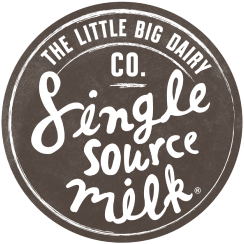Milk is one of the most nutritious drinks available as it contains many minerals and vitamins that are vital for good health. However, it does come in many forms, including full fat, reduced fat, skim, and flavoured milk.
Two significant categories are long life and fresh milk. They are both obtained from cows but are treated differently, which can give them varying characteristics.

Fresh Milk and Long-Life Milk Differences
Fresh milk is pasteurised, which means it is heated to a temperature of 72°C for fifteen seconds or to 63°C for thirty minutes. This aims to extend the shelf life of the milk by killing most of the bacteria. The shelf life is then typically ten days, provided the milk is stored in a refrigerator at a temperature of 4°C.
Fresh milk is very rich in flavour because the enzymes and bacteria that break down fats and milk protein are not affected by the pasteurisation process. Additionally, all of the nutrients are retained, so the health benefits of drinking milk are not affected.
Long life milk is sterilised at high temperatures, generally at 135-150°C for a short period of 2-5 seconds. This process is known as ultra-high temperature sterilisation (UHT) and it kills all micro-organisms and bacteria in the milk. The result is that the milk will typically last for six months while unopened and stored at room temperature. Once opened, however, it must be stored in a refrigerator and should normally be consumed within seven days.
Long life milk tends to have a lower nutritional content than fresh milk. This is because the intensive heat treatment for long life milk makes some of the nutrients break down. Vitamin B12, for instance, which is essential for the health of the nervous system, can be lost. The milk will also taste sweeter due to lactose being caramelised by the process.
Different Uses for Long Life and Fresh Milk
Long life milk is more convenient and lasts longer than fresh milk since refrigeration is not necessary before opening. It is, therefore, often used for camping and other outdoor activities where refrigeration is not possible. It is also commonly used for baking because its more stable protein structure can often produce better results.
Fresh milk is best for drinking due to its richer flavour. It is also used to make cheese, yoghurt, and various other dairy products since the enzymes and bacteria it contains produce a better flavour and texture. For the same reason, it is often used in recipes where a richer flavour will improve the outcome.
Both types of milk should be stored in accordance with the labelling and, if so, will be usable for at least the stated period. Containers should always be covered to prevent cross-contamination, and milk should generally not be frozen since this can destabilise the main protein. Each type of milk is tasty and beneficial, and you should select the one that is best for your needs. For businesses seeking the freshest possible milk with superior flavour, consider sourcing from wholesale dairy distributors who specialise in single-source products, such as Little Big Dairy Co, which processes their milk within 12 hours of milking for maximum freshness and flavour.






